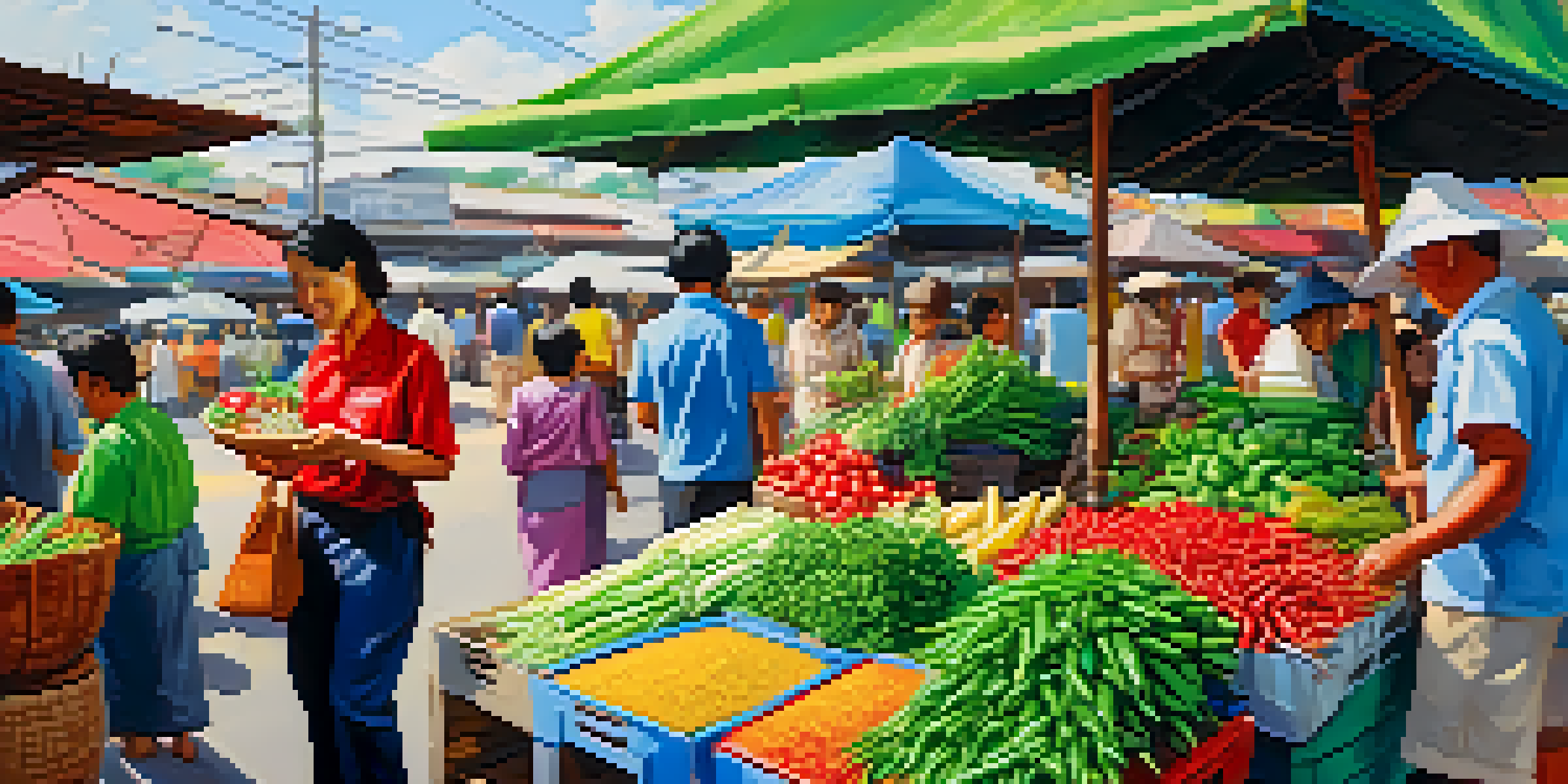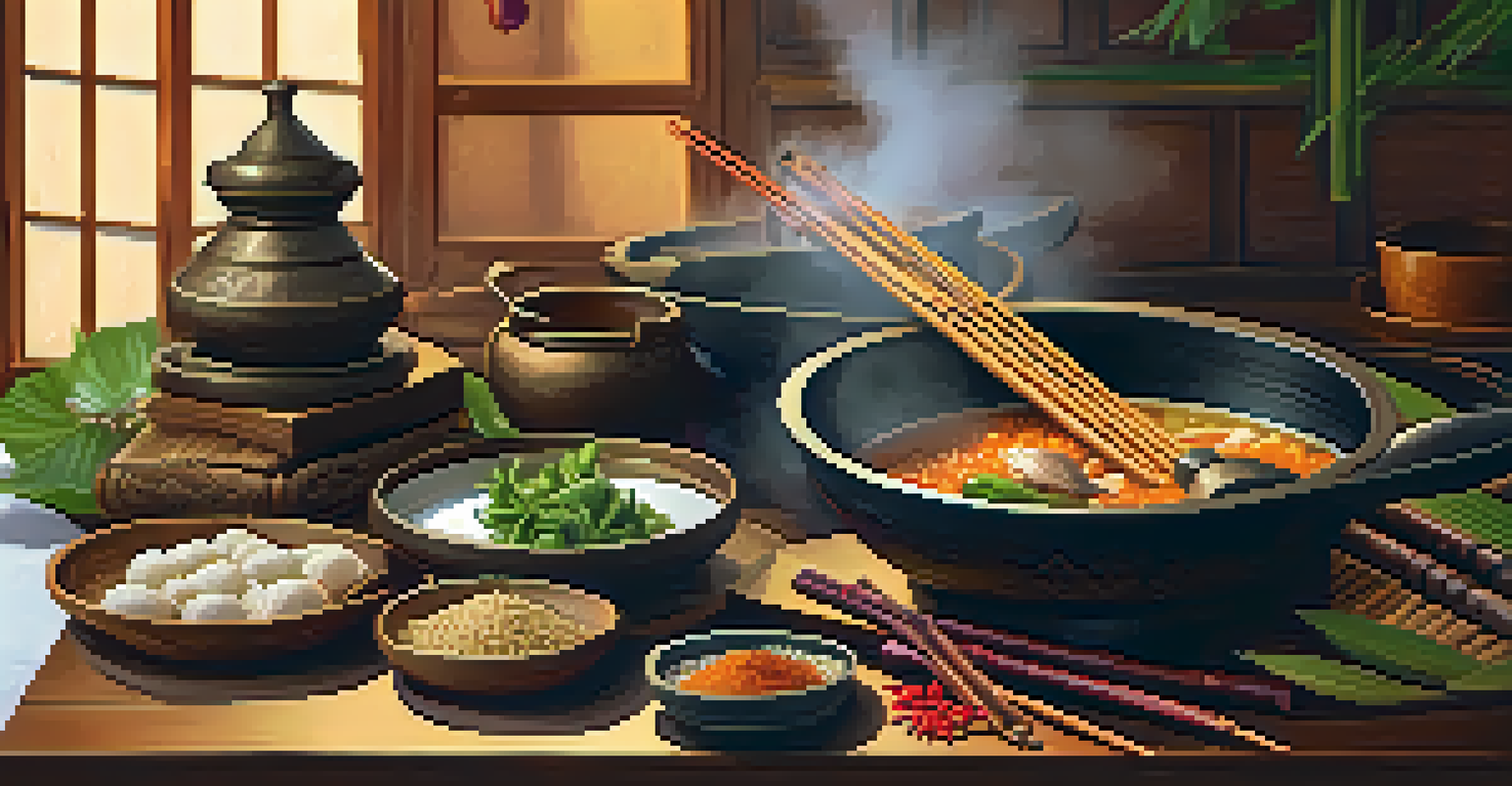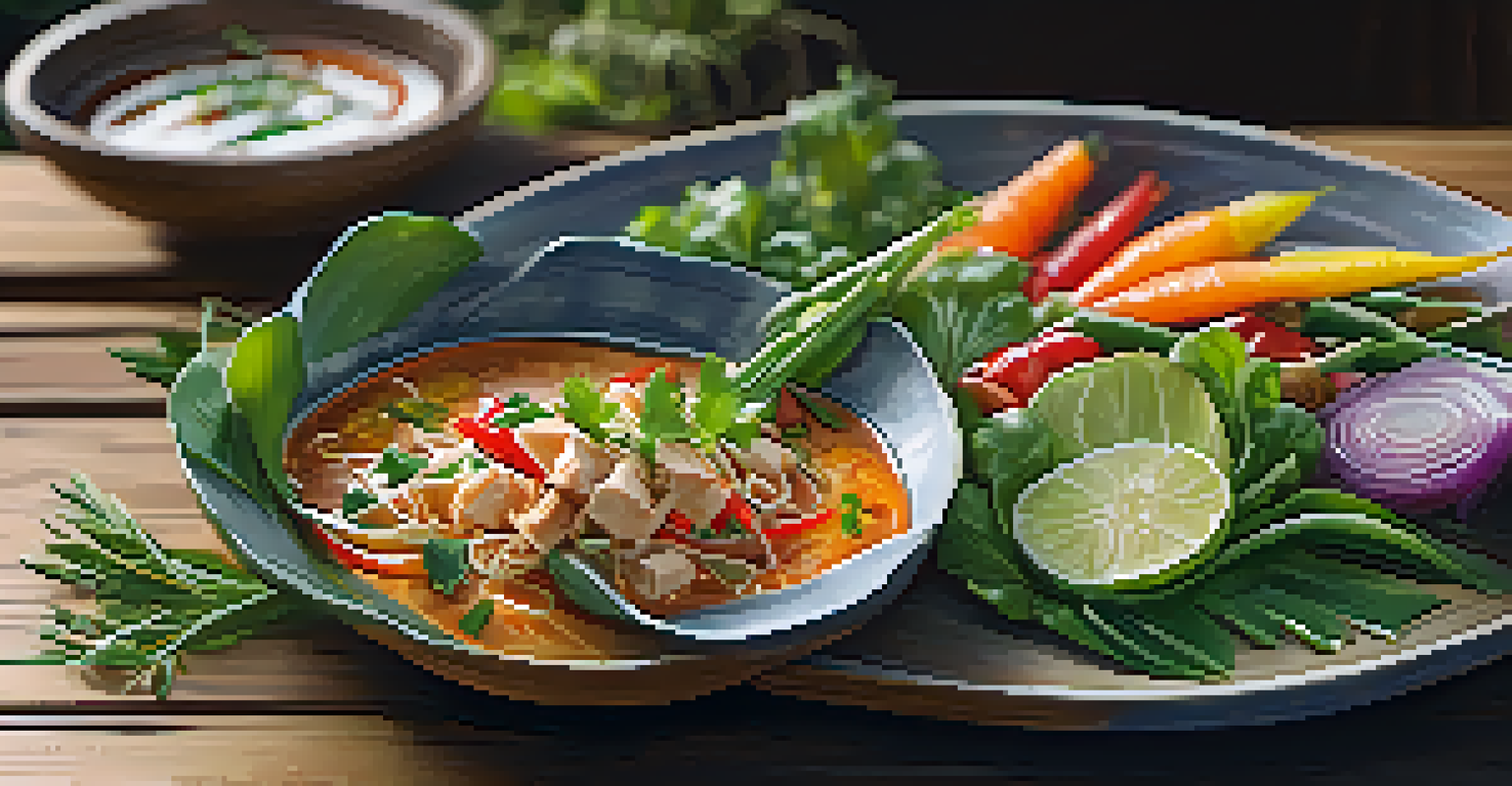Discover Traditional Thai Cooking Techniques in Local Workshops

The Heart of Thai Cuisine: Fresh Ingredients
Thai cooking is all about fresh, vibrant ingredients. Local markets in Thailand burst with color and aroma, offering everything from fragrant herbs like basil and cilantro to exotic vegetables and spices. These fresh ingredients are the backbone of traditional dishes, ensuring that every meal is packed with flavor and nutrition.
Cooking is like love. It should be entered into with abandon or not at all.
When you join a cooking workshop, you’ll often start with a market tour. This experience not only helps you understand how to select the best produce but also connects you to the local culture. Imagine the sights and sounds of bustling vendors as you pick fresh chilies or fragrant lemongrass, setting the stage for your culinary adventure.
As you learn to cook, the importance of these fresh ingredients becomes clear. They are used not just for taste but also for balance and harmony in Thai dishes. This focus on freshness is what makes Thai food so exciting and delicious.
Essential Tools for Traditional Thai Cooking
To master Thai cooking, understanding the tools of the trade is crucial. Traditional kitchens often feature a mortar and pestle for grinding spices, a wok for stir-frying, and bamboo steamers for delicate dishes. Each tool has a purpose and contributes to the unique texture and flavor profiles of Thai cuisine.

During workshops, you’ll get hands-on experience using these tools. For instance, grinding chilies and garlic together in a mortar creates a paste that is a staple in many recipes. This not only enhances flavor but also connects you to centuries of culinary tradition.
Fresh Ingredients Are Key
Thai cooking relies on fresh, vibrant ingredients that enhance flavor and nutrition.
Learning to use these traditional tools can be a delightful challenge. It’s a bit like learning to paint with a new brush; once you get the hang of it, the results can be incredibly rewarding, leading to dishes that truly sing with authenticity.
Key Cooking Techniques: Stir-Frying and Steaming
Stir-frying is a hallmark of Thai cooking, allowing ingredients to cook quickly while retaining their crunch and flavor. This technique involves high heat and constant movement, making it essential to have everything prepped and ready to go before you start. It’s a fast-paced, energetic way to cook that also highlights the freshness of the ingredients.
The only real stumbling block is fear of failure. In cooking, you’ve got to have a what-the-hell attitude.
Steaming, on the other hand, is a gentler technique that preserves the natural flavors and nutrients of food. In workshops, you might find yourself making dishes like Thai dumplings or desserts, showcasing how versatile this method can be. Both techniques are integral to producing the vibrant, healthful meals that Thai cuisine is known for.
Mastering these techniques not only enhances your cooking skills but also deepens your appreciation for the art of Thai cuisine. They reflect the philosophy of balance between health and flavor that is so important in Thai cooking.
The Role of Flavor Balancing in Thai Dishes
One of the most fascinating aspects of Thai cooking is the concept of balancing flavors. Thai dishes often blend sweet, sour, salty, and spicy elements to create a harmonious taste experience. This balance is not just about ingredients but also about how they are prepared and combined.
During workshops, you'll learn how to taste and adjust flavors as you cook. For example, if a dish is too spicy, a splash of lime juice can brighten it up, while a bit of sugar can help mellow the heat. This interactive process makes cooking exciting and allows for personal expression.
Master Traditional Cooking Tools
Understanding and using traditional tools, like a mortar and pestle, is essential for authentic Thai cuisine.
Understanding flavor balancing is like mastering a musical scale; once you know the notes, you can create your own beautiful symphonies in the kitchen. It’s a skill that enhances not just your Thai cooking but your overall culinary repertoire.
Cultural Insights: The Stories Behind Thai Dishes
Thai cuisine is deeply intertwined with the country’s history and culture. Each dish often tells a story, whether it's a family recipe passed down through generations or a regional specialty highlighting local ingredients. Learning these stories adds a rich layer to your cooking experience.
In workshops, instructors frequently share anecdotes about the origins and significance of the dishes you're preparing. This connection to culture transforms cooking from a mere task into a meaningful journey. For instance, dishes like Pad Thai have fascinating histories linked to social and economic changes in Thailand.
By understanding the cultural context, you become more than just a cook; you become a storyteller, sharing the flavors and traditions of Thailand with others. This depth is what makes traditional Thai cooking so captivating.
Hands-On Experience: Cooking and Tasting
One of the most enjoyable parts of attending a Thai cooking workshop is the hands-on experience. After learning about ingredients and techniques, you’ll dive right into cooking, allowing you to apply what you've learned in a practical setting. This interactive approach makes the experience not only educational but also fun!
As you prepare dishes, the aroma of spices and fresh herbs fills the air, creating an atmosphere of excitement. Once the cooking is done, the best part arrives—tasting your creations! Sharing a meal with fellow participants fosters a sense of community and allows everyone to celebrate their culinary achievements together.
Balance Flavors for Authenticity
Achieving a harmonious blend of sweet, sour, salty, and spicy is crucial in creating authentic Thai dishes.
This hands-on experience reinforces the skills you’ve learned while allowing your creativity to shine. It’s not just about following recipes; it’s about enjoying the process and discovering your own style in the kitchen.
Continuing Your Thai Cooking Journey at Home
After participating in a workshop, you might wonder how to continue your journey with Thai cooking at home. The good news is that many of the techniques and recipes you learn can easily be replicated with local ingredients. Plus, the skills you acquire will boost your confidence in the kitchen.
Consider keeping a cooking journal to document your experiences and any adjustments you make to recipes. This can be a fun way to track your progress and experiment with flavors as you recreate your favorite dishes. You might even discover new variations that reflect your personal taste!

By continuing to cook Thai food at home, you not only enjoy delicious meals but also keep the rich culture and traditions alive. Each time you cook, you're honoring the craftsmanship and history behind this beloved cuisine.